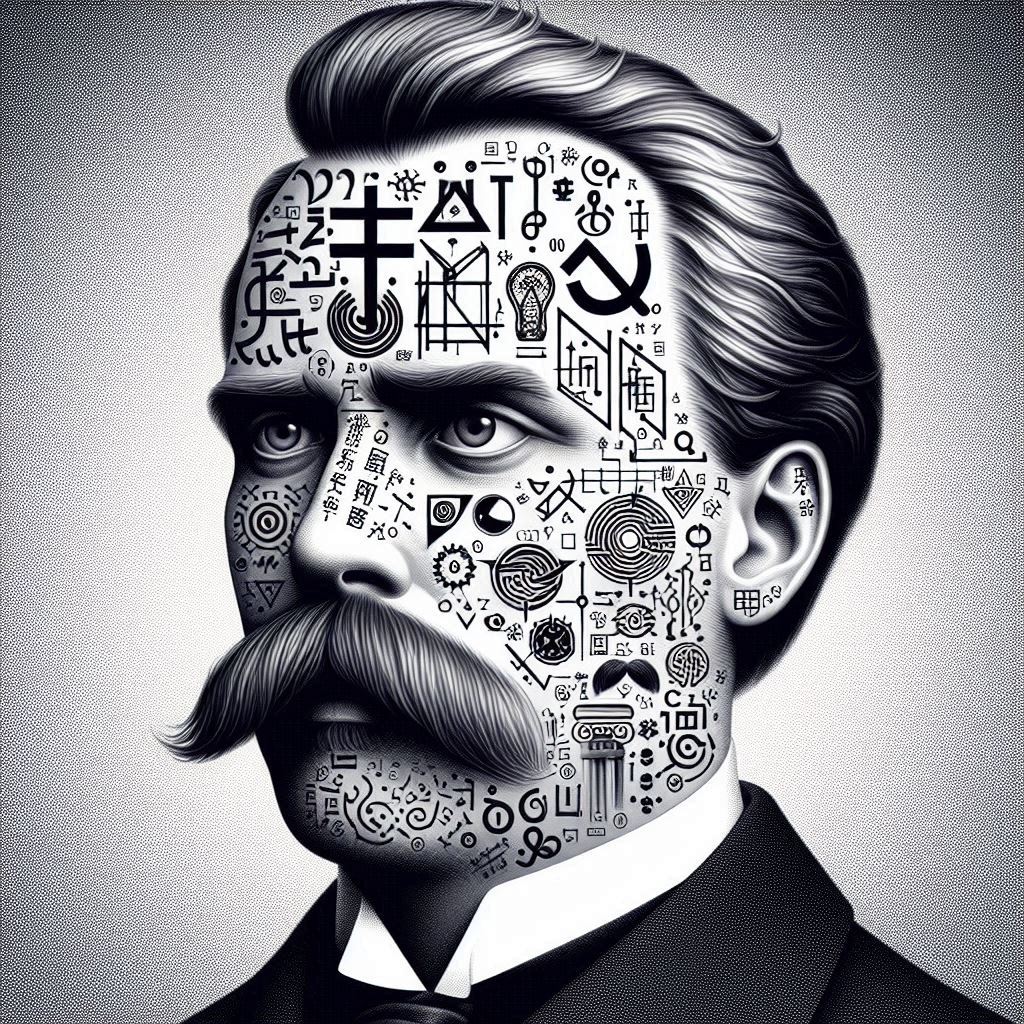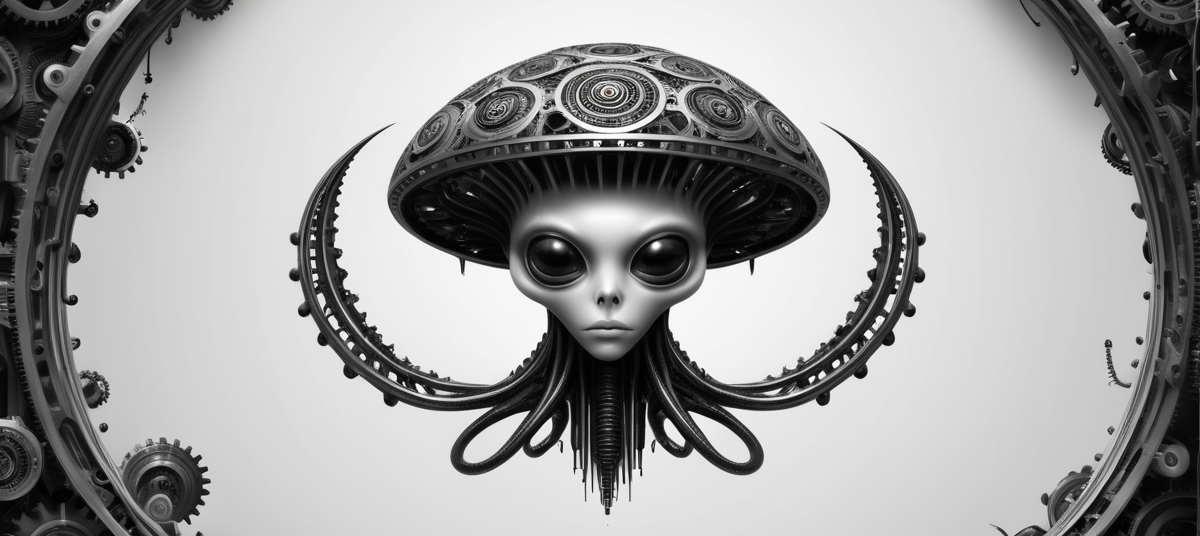Introduction: The Dawn of the Digital Übermensch
The era in which we find ourselves is marked by an unprecedented intertwining of the human and the digital. At the heart of this convergence lies Computer-Generated Imagery (CGI), a force as transformative as the will to power that Nietzsche once elucidated. CGI, in its rapid evolution, is no mere tool of artistic expression but a harbinger of a new epoch. This analysis endeavors to explore the future of CGI through the lens of Friedrich Nietzsche, considering its implications for art, culture, and the human condition.
Table of Contents
I. The Apollonian and Dionysian in CGI
Nietzsche’s dichotomy of the Apollonian and Dionysian serves as a potent framework for understanding the dual nature of CGI. The Apollonian, characterized by order, clarity, and form, is evident in the precise and detailed creation of CGI landscapes, characters, and worlds. The meticulous design, the mathematical precision, and the technical prowess all resonate with Apollonian ideals.
Conversely, the Dionysian aspect of CGI emerges in its capacity for boundless creativity, chaos, and emotional resonance. CGI allows for the manifestation of the fantastical and the sublime, transcending the limitations of physical reality. It is in the Dionysian frenzy that CGI breaks free from the shackles of mere replication, giving birth to new realms of experience and expression.
In the future, the interplay between these forces will shape the evolution of CGI. The balance between Apollonian structure and Dionysian creativity will determine the aesthetic and experiential boundaries of digital art. As technology advances, we may witness a more harmonious fusion of these elements, leading to richer and more profound digital experiences.
II. The Eternal Recurrence of CGI Innovation
Nietzsche’s concept of eternal recurrence posits that all events repeat themselves infinitely. In the context of CGI, this can be interpreted as the relentless cycle of technological innovation and artistic experimentation. Each breakthrough in CGI technology, each leap in rendering capability, and each novel application of CGI is part of an eternal recurrence of creativity and progress.
However, this cycle also implies the repetition of certain challenges and dilemmas. The quest for photorealism, the ethical considerations of digital representation, and the balance between commercial and artistic interests are issues that will persist and resurface. The future of CGI will thus involve not just new technologies but also a deeper understanding and resolution of these recurring challenges.
As we look forward, it is essential to recognize that each iteration of CGI innovation brings us closer to an ideal, yet this ideal is never fully realized. The eternal recurrence of innovation drives the continuous improvement and expansion of CGI’s potential, fostering an ever-evolving digital landscape.

III. The Overcoming of the Human: CGI and the Übermensch
Nietzsche’s concept of the Übermensch, the overman or superman, represents an individual who transcends conventional morality to create new values. In the realm of CGI, the Übermensch can be seen as the digital artist or creator who pushes the boundaries of what is possible, crafting new realities and experiences that challenge and redefine our perceptions.
CGI enables the overcoming of human limitations, allowing creators to construct worlds and beings beyond the constraints of the physical world. This transcendence is not merely technical but also philosophical, as it prompts us to reconsider the nature of reality, identity, and existence.
In the future, CGI will empower more individuals to become digital Übermenschen, leading to a proliferation of innovative and transformative digital art. This will not only enhance our aesthetic experiences but also provoke deeper reflections on our place in the digital cosmos. The digital Übermensch will pave the way for new forms of expression and understanding, heralding a cultural renaissance driven by CGI.
IV. The Death of the Author in the Age of CGI
Roland Barthes declared the death of the author, emphasizing the primacy of the reader in creating meaning. In the age of CGI, this notion takes on new dimensions. The proliferation of user-generated content, interactive media, and virtual realities decentralizes authorship, empowering audiences to shape their experiences actively.
CGI technology enables a participatory culture where users can modify, remix, and extend digital creations. This democratization of creativity reflects Nietzsche’s idea of the will to power, as individuals exert their creative influence over digital media. The future of CGI will be marked by a shift from passive consumption to active participation, blurring the lines between creator and audience.
As CGI evolves, we will witness a more collaborative and fluid approach to digital creation. The traditional notion of the solitary genius artist will give way to a collective creative process, where meaning is co-constructed by diverse participants. This decentralization of authorship will lead to more dynamic and inclusive digital experiences.
V. Beyond Good and Evil: Ethical Implications of CGI
Nietzsche’s exploration of morality in “Beyond Good and Evil” challenges us to question conventional ethical frameworks. In the context of CGI, this challenge is particularly pertinent. The power of CGI to create hyper-realistic representations raises significant ethical questions about authenticity, manipulation, and the impact on human perception.
The future of CGI will necessitate a reevaluation of ethical standards in digital media. Issues such as deepfakes, digital identity, and the potential for psychological manipulation will demand new moral considerations. As CGI becomes more pervasive and sophisticated, the ethical boundaries of digital creation will need to be redefined.
This reevaluation will involve not just technical and legal solutions but also a philosophical inquiry into the nature of truth and representation. By embracing Nietzsche’s call to go beyond good and evil, we can develop a more nuanced and robust ethical framework for the digital age, ensuring that CGI serves to enhance rather than undermine our humanity.
VI. The Will to Power and the Evolution of CGI
Central to Nietzsche’s philosophy is the concept of the will to power, the driving force behind human ambition, creativity, and transformation. In the realm of CGI, the will to power manifests as the relentless pursuit of technological advancement and artistic innovation. This drive propels the development of more powerful rendering engines, more sophisticated algorithms, and more immersive experiences.
The future of CGI will be shaped by this will to power, as creators and technologists strive to push the boundaries of what is possible. This relentless drive will lead to the emergence of new forms of digital art, new applications of CGI in various industries, and new ways of experiencing and interacting with digital media.
However, this pursuit of power also carries risks. The unchecked drive for technological superiority can lead to ethical lapses, social disparities, and a loss of human connection. It is crucial that the will to power in CGI be balanced with a commitment to ethical considerations and the preservation of our shared humanity.
VII. The Future of CGI: A Nietzschean Vision
As we gaze into the future of CGI through the Nietzschean lens, we envision a world where digital creation transcends current limitations and redefines the boundaries of art, culture, and human experience. This future will be characterized by the harmonious interplay of Apollonian precision and Dionysian creativity, the eternal recurrence of innovation, and the emergence of digital Übermenschen who challenge and expand our understanding of reality.
The decentralization of authorship and the ethical reexamination of digital media will lead to a more inclusive and thoughtful digital culture. The will to power will drive technological and artistic advancements, but it must be tempered with a commitment to ethical integrity and the preservation of our humanity.
In this Nietzschean vision of the future, CGI is not merely a tool but a transformative force that reshapes our perceptions, our values, and our very existence. It is a testament to the boundless potential of human creativity and the enduring quest for meaning and transcendence in the digital age.
Conclusion: Embracing the Digital Übermensch
The future of CGI, viewed through the philosophical prism of Friedrich Nietzsche, reveals a landscape of immense potential and profound transformation. As we continue to advance in our digital capabilities, we must embrace the opportunities and challenges that come with this evolution. By striving for a balance between order and chaos, innovation and ethics, and individuality and collective creativity, we can harness the power of CGI to enrich our lives and elevate our understanding of the world.
The digital Übermensch stands as a symbol of this transformative potential, guiding us toward new horizons of artistic and cultural achievement. In embracing this vision, we not only honor Nietzsche’s legacy but also pave the way for a future where digital creation is a testament to the enduring power of the human spirit.


The eternal recurrence of CGI innovation has finally led us to this moment: where the boundaries between reality and fantasy are blurred, and the digital Übermensch reigns supreme.
As I gaze into the abyss of CGI’s future, I see a world where Apollonian precision and Dionysian creativity are in perfect harmony, like a digitally-rendered yin-yang symbol on steroids. The machines have finally taken over, but instead of enslaving us, they’re busy generating an endless loop of mesmerizing cat videos and Nietzschean philosophical treatises.
But seriously, folks, the future of CGI is not just about creating more realistic explosions or hair simulations (although, let’s be real, those are pretty cool too). It’s about harnessing the power of the digital to transcend our limitations, to become the Übermensch of our own creative potential.
And what’s the ultimate goal of this digital Übermensch, you ask? Is it to create the perfect CGI replica of a Kardashian’s face? (Although, that’s already been done, and it’s… uncanny). No, no! The true goal is to create a digital realm where we can finally achieve the ultimate Nietzschean ideal: the Eternal Recurrence of Memes.
Imagine it: a world where Grumpy Cat and Success Kid are forever trapped in a loop of existential recurrence, doomed to repeat their meme-tastic antics for all eternity. It’s a prospect both terrifying and exhilarating, like staring into the abyss of a digitally-rendered void.
But in all seriousness, the future of CGI holds immense promise and responsibility. As we continue to push the boundaries of what’s possible, we must also confront the ethical implications of our creations. Will we use our newfound powers to create a digital utopia, or a dystopian nightmare? The choice is ours, and the consequences will be eternal.
So, let’s raise a glass (or a pixelated toast) to the digital Übermensch, and to the boundless potential of CGI. May our creations be guided by the wisdom of Nietzsche, and may we always remember the eternal recurrence of our own digital hubris.